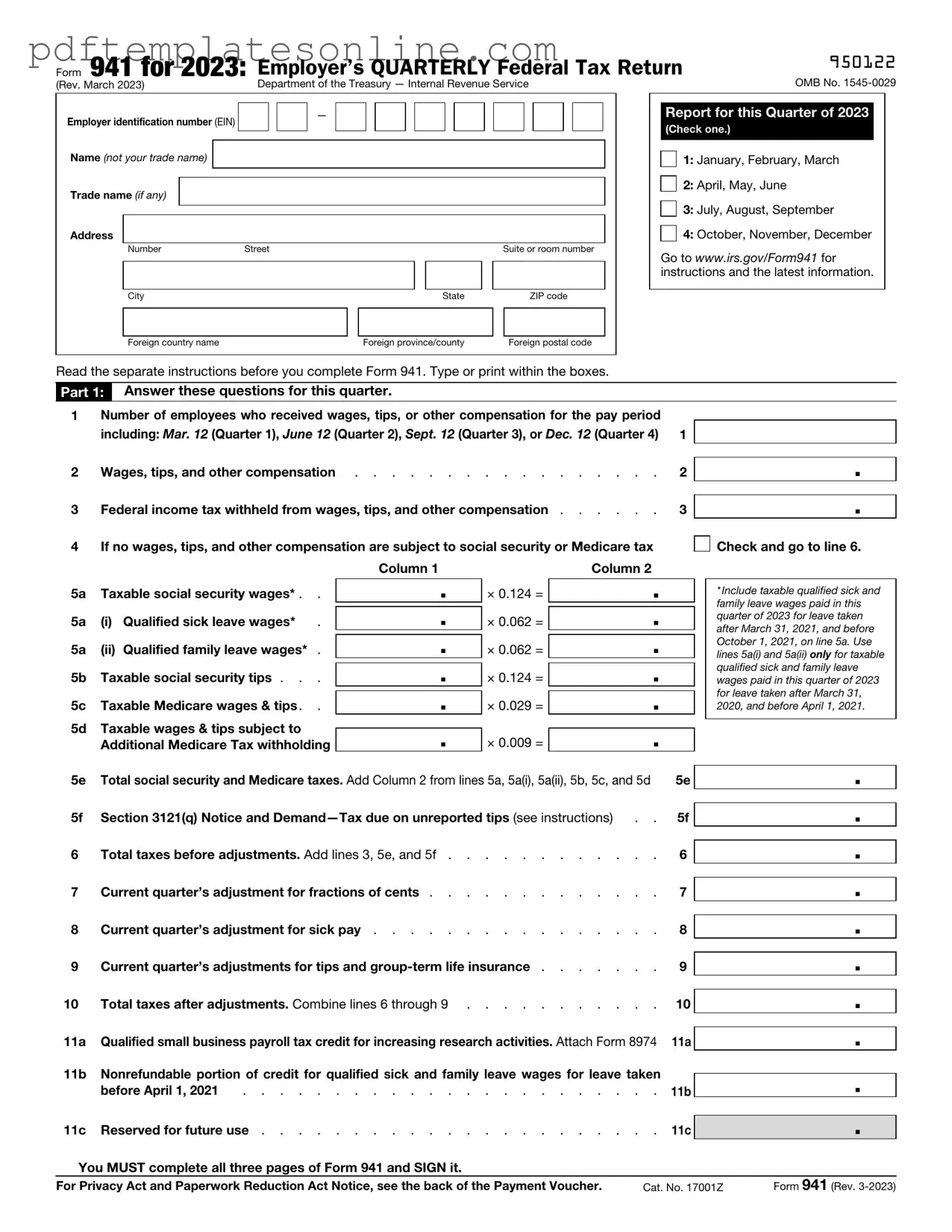Filling out the IRS Form 941 can be a daunting task for many. It’s essential to understand that this form is used to report income taxes, Social Security tax, and Medicare tax withheld from employee paychecks. Mistakes on this form can lead to penalties or delays in processing. Here are eight common mistakes people often make when completing the IRS 941 form.
One frequent error is not reporting the correct number of employees. Employers must accurately indicate the number of employees they had during the quarter. Failing to do so can result in discrepancies that may raise red flags with the IRS. Always double-check your records to ensure accuracy.
Another common mistake involves incorrect calculations of taxes owed. Many individuals miscalculate their payroll taxes, leading to underreporting or overreporting. This can happen due to simple math errors or misunderstanding tax rates. It’s crucial to review your calculations carefully and consider using a calculator or software to assist.
Some people forget to sign and date the form. This may seem like a minor detail, but an unsigned form can be considered incomplete. Always ensure that the form is signed by the appropriate person, typically the employer or an authorized representative.
Inaccurate or missing information regarding the employer identification number (EIN) is another common mistake. The EIN is essential for the IRS to identify your business. Ensure that you enter the correct EIN and that it matches the number on your previous tax filings.
Many individuals also overlook the importance of keeping records. Failing to maintain adequate payroll records can lead to difficulties when completing the form. It’s essential to have all necessary documentation on hand, including wages paid and taxes withheld, to ensure accurate reporting.
Another mistake is not checking for updates to tax laws or IRS guidelines. Tax laws can change frequently, and it’s vital to stay informed about any updates that may affect your filing. Consulting the IRS website or a tax professional can help you remain compliant.
Some people neglect to file the form on time. Late submissions can incur penalties and interest. Mark your calendar with the due dates and set reminders to ensure that you file your Form 941 promptly.
Lastly, many individuals fail to review the completed form before submission. Taking the time to carefully read through the entire form can help catch errors before they become an issue. A thorough review can save time and prevent complications down the line.
